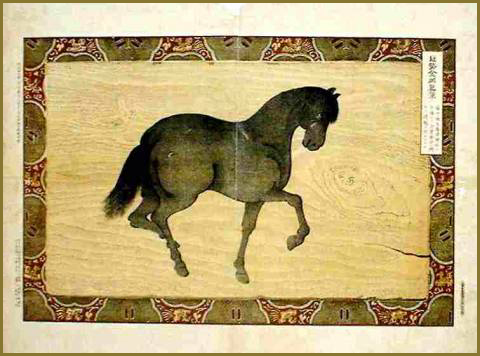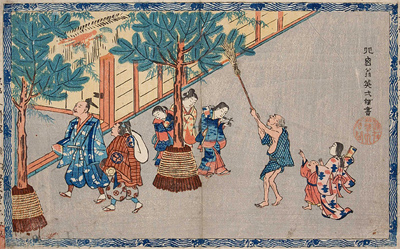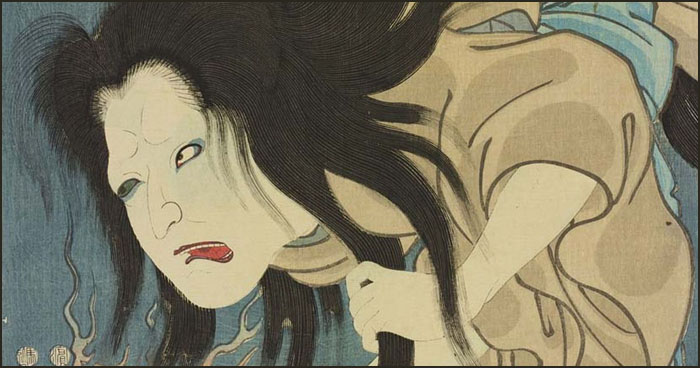[ . BACK to DARUMA MUSEUM TOP . ]
. Onipedia - 鬼ペディア - Oni Demons - ABC-List - .
. kishin, kijin, onigami 鬼神の伝説 Oni Deity Demon Legends .
::::::::::::::::::::::::::::::
Kijin no O-Matsu 鬼神のお松 The female bandit O-Matsu
"The Evil Omatsu"

source : kaminokura.co.jp/p
鬼神お松 くどき Kijin O-Matsu kudoki
quote -
Omatsu, usually referred to as 'Evil Omatsu', is loosely based on an historical figure: a woman outcast who used her beauty to escape her origins. The popular version falls into the female poisoner genre. Omatsu is said to have become a courtesan, seduced, married and murdered Shirosaburo, a blind samurai, become an outlaw, and ended up as leader of the bandit gang.
The prevalence of female outlaws, poisoners, ghosts, bandits, outlaws and warriors in folk tales and in ukiyo-e and kabuki dramas represent two competing ideas .. on the one hand, they may reflect the growing status of women as Japan moved towards post Tokugawa feudalism, on the other hand they may represent the fear and anger at what was perceived as a female threat to the social order of things. In early modern British society for example, the threat of women poisoners ... particularly those who poisoned their husband was actually very small, but public apprehension of the threat was stoked by one or two show trials and the publication of block printed news sheets that whipped up a frenzy of fear and rage in the male populace.
Either way, Evil Omatsu was the subject of kabuki plays and the public were clearly thrilled at her exploits ...
albeit fictional.
- source : toshidama-japanese-prints.com -
Natsume Shirosaburo 夏目四郎三郎

..............................


Bando Shuka as the Female Bandit Kijin no Omatsu
- reference - kijin no omatsu -
kijin 鬼神 strong-woman
..............................
Kasamatsu tooge kijin, Kasamatsu Tōge kijin 笠松峠鬼人 Kijin from Kasamatsu pass

Kasamatsu tooge kijin, Kasamatsu Tōge kijin 笠松峠鬼人 Kijin from Kasamatsu pass
Book by Sawamuraya Seikichi
- source : books.google.co.jp/books -

A story about O-Matsu and the son of Natsume Shirosaburo, taking avenge of his father's murder.
::::::::::::::::::::::::::::::
. kishin, kijin, onigami 鬼神の伝説 Oni Deity Demon Legends .
::::::::::::::::::::::::::::::

. - - - Join the Onipedia friends on facebook ! - - - .
::::::::::::::::::::::::::::::
. Onipedia - 鬼ペディア - Oni Demons - ABC-List - .
. Tengu 天狗と伝説 Tengu legends "Long-nosed Goblin" .
. - yookai, yōkai 妖怪 Yokai monsters - .
. Legends and Tales from Japan 伝説 - Introduction .
. Mingei 民芸 Regional Folk Art from Japan .
::::::::::::::::::::::::::::::
[ . BACK to DARUMA MUSEUM TOP . ]
[ . BACK to WORLDKIGO . TOP . ]
- #kijinomatsu #omatsukijin -
::::::::::::::::::::::::::::::
--
Posted By Gabi Greve to Kappa - The Kappapedia on 5/12/2017 02:43:00 pm










































